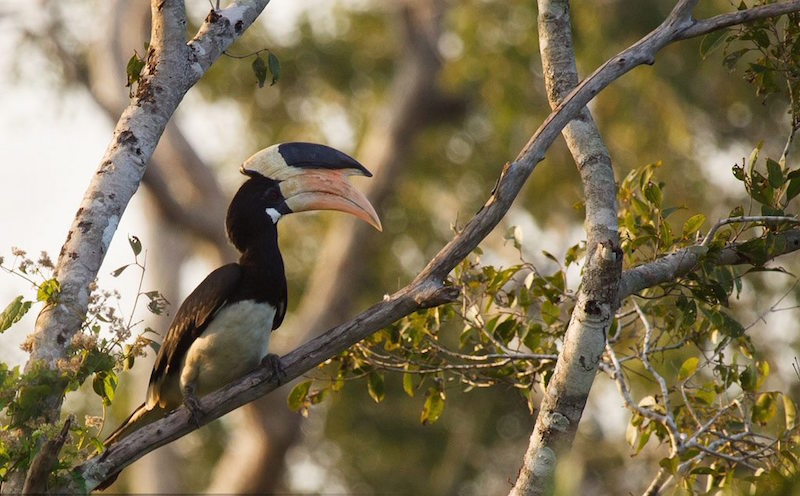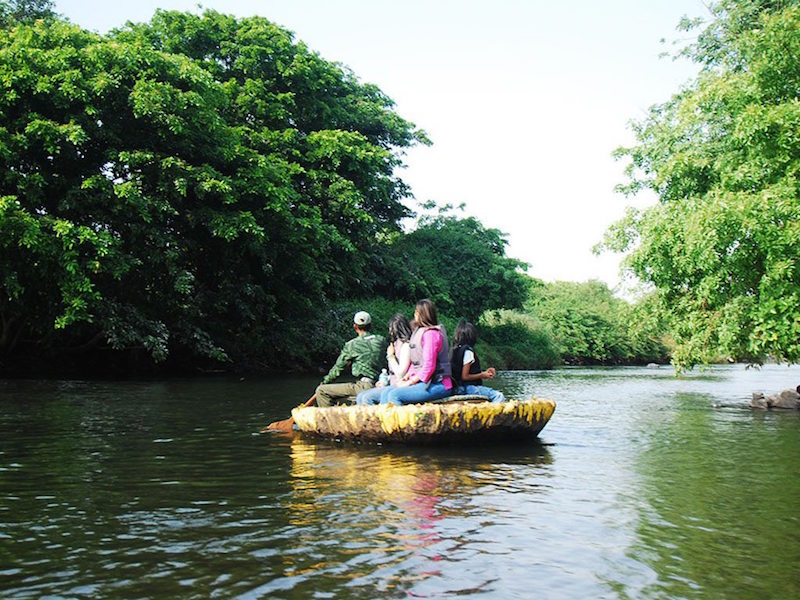National Parks You Must Visit
Over the last decade, I’ve travelled extensively in India’s wild spaces, from the Himalayan National Park with its alpine vegetation in the north, to the wet rainforests of Agumbe in the south. The remarkable thing about India’s natural landscape is its diverse ecosystems, all in one place: rainforests, scrublands, river sanctuaries, islands, deserts. In that, I’ve started to see these places not as destinations, but as homes, with their own history and stories of survival.
It’s downright impossible then to pick which places you should travel to. This piece then, is just a place to begin. Start with these and go on to explore the tremendous ecosystems that this country hosts.
AGUMBE, KARNATAKA
Excellent for: Watching snakes
The King lay a mere eight feet away.
The sky was full of stars, the cicadas were carrying on a spirited symphony and the darkness of the night was being battled only by the glow from our torches.
There he lay coiled, a 10- to 12-foot King Cobra.
Now, while we come to terms with the fact that this was one of the most venomous snakes in the country, let me supply some context to this night.
I was on a night walk with researchers from the ARRS (Agumbe Rainforest Research Station), on a story for Lonely Planet Magazine India. I was expecting to see nothing, well, apart from a vine snake or two, and some interesting insects. At best, I was hoping to see a Slender Loris, with its googly eyes, scorpions or a Flying Squirrel (all of which I did see). I was not expecting to see the King; it doesn’t happen that easily. People stay for weeks, months without seeing one. I know of travellers having made repeat trips, unsuccessfully, to see a King in the wild.
This was truly a blessing from the Gods.
Agumbe is a part of the Western Ghats in Karnataka, and home to the ARRS, a conservation and research initiative started by Romulus Whitaker, to study and document species in the Agumbe region, especially the King Cobra. When I visited, almost five years ago, they were conducting the first of its kind telemetry project on these magnificent snakes. Field visits revealed further gems, a Krait that slithered past us, less than five feet away, on the other side of a mesh fence, a Malabar Pit Viper just outside the lavatory, a Hump-nosed Pit Viper coiled near a stream.
Water lies at the heart of Agumbe’s allure. The weather is tropical and humid, ensuring torrential rain that refuses to go quietly. To see the forest during and after the monsoon, is to see the forest covered in a shade of green you’ve never seen before. Wildlife photographer and researcher Tasneem Khan writes about the Agumbe monsoon in this beautiful manner: At first, the thirsty laterite soil seems to absorb every drop of water, but the rain is incessant and soon every little ditch, depression and trench is converted into a water body. Rivulets course through plantations and forests, rapidly feeding these streams and rivers. As the rivers begin to flow, they set in motion countless processes of revival, birth, growth, life and death.”
I’d suggest you explore the forest around ARRS, and spend time understanding the habitat, but if you do want to venture out, there are a few places to visit: the touristy Sunset Point, Jogigundi Falls, Kundadri Hills. Incidentally, Agumbe is where Malgudi Days was shot, and the old house, Dodda Mane, where everyone’s beloved Swami stayed in, is alive and well, and open to tourists.
FACT FILE
By air: Mangalore (110km).
By rail: Udupi (55km) is the closest railway station. You can also alight at Shimoga (90km).
By road: A direct KSTRC bus runs between Agumbe and Bangalore daily. Buses ply every 20 minutes from Mangalore to Shimoga that pass via Agumbe.
Stay:
There aren’t too many places to stay at in Agumbe. If you want to enjoy the forest and avail of in-house expertise, these two are your best bets.
Agumbe Rainforest Research Station (ARRS). Write to them at arrs.india@gmail.com
Kalinga Acre. Visit kalingacre.com for more details.
Best time to visit: October onwards.
Eaglenest Wildlife Sanctuary/ Pakke Tiger Reserve, Arunachal Pradesh
Excellent for: birding
I heard them before I saw them.
The sound of large wings beating in the air.
As we looked up, two Great Hornbills flew out from a tree and flew synchronously, high above our upturned faces. I caught a glimpse of the majestic casques before they disappeared into the distance, a mere memory of yellow, white and black.
For a few seconds, no one spoke, and then there was jubilation in the vehicle, complete with a round of silenced high-fives (this was a forest, after all, in the middle of Pakke Tiger Reserve). The Great Hornbill was for most of us a lifer, as they say in birding circles, a term used when you see a bird for the first time. I wasn’t much of much of a birder then – or even now – but I was rendered speechless at the sighting.
I will never forget that sound, and how gracefully they sliced through the air despite their enormous size.
As I learned more about them, I realised they’re not endemic to the these parts, you can spot them just as easily in the Western Ghats, it’s the three other species of hornbills found here – Rufous-necked, Wreathed, and the Oriental-pied – that are far more difficult to spot. Pakke is thus also the site chosen for the annual Pakke Paga Festival (Paga meaning Hornbill) that is usually celebrated in January. The 860sqkm reserve is an excellent birding spot, with many endemic species found here.
Photo: Thimindu Goonatillake/Creative Commons (http://bit.ly/1jxQJMa)
The forests of the Northeast are different than any other you’ve visited in India. It’s in the way the air is pure and clear at that height. Or in the way trees fill the mountain slopes – as if fighting for space – so all you can see as you drive up the winding, narrow roads are thousands of canopies of varying green clustered close together. Or in the way that the jungle seems truly wild in comparison to the slightly managed forests on regular tourism circuits. Eaglenest Wildlife Sanctuary in Arunachal Pradesh is a revelation. I was part of a conservation initiative where familiarisation wildlife camps were conducted at Eaglenest with school children. The sheer volume of biodiversity astounded everyone, not just the kids. There are at least 450 species of birds (if not more) found here, including the Beautiful Nuthatch, a birding favourite, the extremely strange and entertaining Wallcreeper, and the rare Bugun Liochicla, first spotted in 2006 but now almost extinct, with only 20 individuals left in the wild. The drive through the sanctuary is a bumpy one but you won’t notice it, really, not with the different species of bamboo thickets that change with elevations, and the anticipation (and worry) of spotting a wild tusker, or a Red Panda or a Clouded Leopard on the route. Nothing comes easy though, at Eaglenest, it’s remote, it has limited accommodation and the species, tough to spot. But the views every morning, and the untamed heart of this forest make it all worthwhile.
FACT FILE
By Air: Guwahati (320km)
By Rail: Guwahati
By Road: It’s best to make your way to Guwahati and make your way on from there.
STAY
There are just two places to stay, both are campsites with basic facilities.
Lama Camp, run by the Bugun tribe: Call 91-94362-51508 or write to phuarung@gmail.com.
Bhompu Camp, run by the Shertukpen tribe: http://eaglenestbirding.com/bompu-camp/
Best time to visit: If you’re interested in reptiles, visit during or the monsoon; otherwise October is a good time to see birdlife and still be able to see reptiles. It gets very cold after that.
-----------------------------
Kali Tiger Reserve, Karnataka
Excellent for: Birding, Crocs and the elusive Black Panther
Some afternoons are just different.
They aren’t spent working, or reading, but in a coracle in the middle of a croc-infested river in Dandeli, A small town in Karnataka.
River Kali is known to be moody; she’s tempestuous in some places and serene in others. This particular stretch was calm, making it appropriate to go looking for crocodiles. The coracle navigated the river with ease, its roundness ensuring maximum proximity to everything, while rowing close to the banks to look for basking reptiles or battling mid-river currents. For a while, we enjoyed the lazy turns as we floated along, combing the area, and then finally we met one – a young male, resting close to the shore. The boatman took us close to him, right until we were almost at touching distance. The feisty male splashed his tail and disappeared under the water wildly rocking our tiny boat (and our hearts).
If you don’t particularly fancy getting into the water, you can keep an eye on Crocodile Island from a watchtower at JLR, where at certain times in the day, you can see them sprawled over, basking, sleeping, basically enjoying all the attention and the hospitality. This is also the best spot to watch birds from.
If you aren’t already a birder, there is an excellent chance that Dandeli will make one out of you. Mornings are filled with birdsong, which is loud and melodious enough to wake you. Hornbill, Malabar Whistling Thrush, Brahminy Kite, Asian Paradise Flycatcher, the gorgeous Malabar Trogon; the list, while it isn’t endless, is fairly long.
If you’d like to take a safari, spend mornings and evenings at the Anshi-Dandeli Tiger Reserve (now called Kali Tiger Reserve), which is part of the Dandeli Wildlife Sanctuary. Two tribes, Gowlis, a herding community, and the Siddhis share this teak and rosewood forest with the wildlife. There’s also evidence of mining at Shilori Peak before the ban in the 1990s. There are big cats in this reserve, so there’s a chance you’ll meet the tiger, or the leopard, or if you’re truly lucky, the melanistic leopard, popularly called the Black Panther. If that isn’t incentive enough…
FACT FILE:
By Air: Belgaum (approximately 90km)
By Rail: Belgaum is more convenient and better connected. You can also take the Hubli Exp from Belgaum to Londa and take a taxi from there to Dandeli.
By Road: Belgaum to Dandeli via NH748 and Mirjan – Ramnagar Road.
STAY
While Dandeli has enough options to stay at, Jungle Lodges and Resorts (JLR) has a monopoly in terms of safaris to parks, meaning you can do the 3 hour jeep safaris only if you’re going to stay on the property. Otherwise, there’s an hour ride in the forest for travellers staying in other hotels.
JLR has two gorgeous properties here: The Kali Adventure Camp and The Old Magazine House. Visit junglelodges.com for more details.
Best time to visit: October to May
----------------------------------
The central Indian trio, Madhya Pradesh
 Go for: Jeep safaris, big cats, birding
Go for: Jeep safaris, big cats, birding
This is the heart of tiger country. Madhya Pradesh hosts three of the most popular names in wildlife tourism: Pench, Kanha, Bandhavgarh, sitting conveniently side by side. The reason they’re on this list together, is the possibility of putting more than one on your itinerary.
The landscape is similar across these forests. Sal and teak trees dominate the central Indian landscape and much of Kipling’s Jungle Book, is set in Pench, not Kanha, as many still believe. While driving through Pench, you’ll see how the large grey boulders, stacked up against each other, could so easily be Bagheera’s perch, and how the numerous rocky plateaus could host important wolf council meetings. But Shere Khan is surprisingly sociable here. Collarwali, a radio-collared tigress, is a favourite with photographers and tourists. She seems unfazed by attention and regularly emerges for sightings with her cubs.
Unlike in the south, this familiarity and affection for certain tigers is extensive in the forests of central and northern India. While some think this encourages a fondness for the animals, others see it as a danger to the cats and other species, escalating one animal’s brand over that of the forest, even in a poacher’s eyes. Whichever way you see it, some of these animals have achieved cult status. Bandhavgarh, which is still one of the most popular parks in the country, was an even stronger magnet for tourism years ago, with stories about the mighty Bamera, Kankati, Charger delighting travellers.
To me, however, Bandhavgarh means none of those things, but an opportunity to work and volunteer in conservation in the context of communities that stay around the forest. Instead of merely sitting in a jeep and zipping through the forest, it’s far more enriching to find opportunities to engage in upkeep, awareness programmes and constructive tourism. In national parks like these, make time to walk on nature trails, observe smaller animals, especially those that aren’t as charismatic as the big cats, converse with people you meet, use travel as a way to deeper understand our tourism spaces and how you can contribute.
For the most part, enjoy these forests. The tiger is just one resident of this ecosystem. Pay attention to the landscape, observe how it changes as you move between zones. By the time you hit the famed Kanha meadows you will have seen many chitals, already, but wait and observe as the sun rises over these grasslands, the landscape in a warm glow, illuminating herds of deer, langurs, and so many hidden creatures.
Fact File:
By Air: Both Nagpur (better for Pench and Kanha) and Jabalpur (for Bandhavgarh) have airports that have regular frequency of flights.
By Rail: Nagpur, Katni, Umaria are railheads on this route.
By Road: From Nagpur Pench is closest at 90km, then Kanha (260km). It is better to drive to Bandhavarh from Jabalpur (190km).
Best time to visit: The summer heat brings the cats to the waterholes, so if you can withstand temperatures soaring to 45 degrees and above, March to May is a good time for sightings. The parks are closed in the monsoon.





